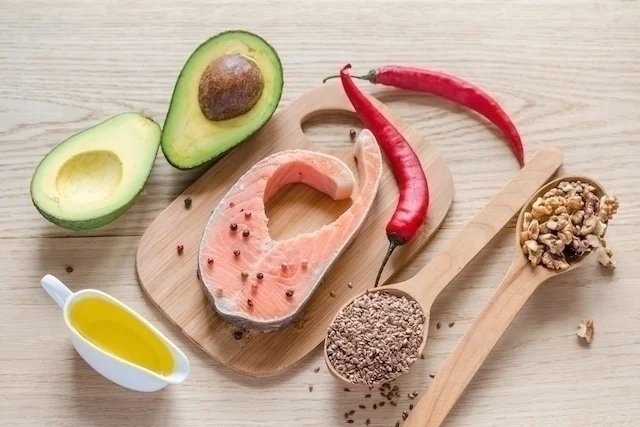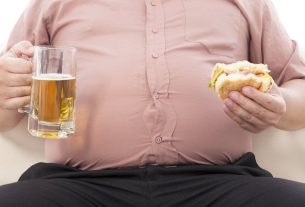Some tips for lowering bad cholesterol (LDL) include making changes in your lifestyle, such as practicing physical exercise regularly, increasing your consumption of soluble fiber and drinking green tea daily, for example, in addition to prioritizing the consumption of fruits, vegetables and fresh fish, cooking with natural sauces, grilling or steaming.
In most people, high levels of bad cholesterol are due to a diet rich in saturated and trans fats, such as fatty meats, full-fat dairy products, pizzas, cakes or fried foods, for example, combined with a sedentary lifestyle.
These lifestyle changes are necessary to reduce the risk of heart disease, as high levels of bad cholesterol cause it to accumulate in the arteries and form plaques, increasing the risk of developing cardiovascular diseases, such as atherosclerosis, stroke or heart attack. of the myocardium.

What to do to lower LDL
Some tips for lowering bad cholesterol are:
1. Exercise regularly
Aerobic exercises such as swimming, running, walking, water aerobics or cycling are the best options for reducing LDL cholesterol in the blood and, therefore, it is recommended to practice physical activity for 30 to 40 minutes a day, at least 3 times a week, at moderate or high intensity. See which aerobic exercises to do at home.
Furthermore, physical exercise helps increase good cholesterol (HDL), which is associated with a lower risk of developing cardiovascular disease.
2. Eat foods rich in phytosterols and phytostanols
Daily consumption of foods rich in phytosterols and phytostanols, such as fruits, vegetables, nuts, vegetable oils and cereals, helps reduce LDL cholesterol, called “bad”.
These substances of plant origin have a structure very similar to that of cholesterol, so they prevent cholesterol from food from being absorbed in the intestine, reducing the risk of cardiovascular diseases, such as atherosclerosis and myocardial infarction.
3. Increase fiber intake
A diet rich in soluble fibers, such as oat bran, barley and legumes, helps to increase the elimination of cholesterol in the feces through bile acids, in addition to the fact that fibers, when fermented in the intestine by bacteria, produce fatty acids of short chain, inhibiting the formation of cholesterol in the liver.
Therefore, it is recommended to consume at least 3 to 5 servings of fresh vegetables and fruits per day, such as apples, pears, bananas, green beans, green beans or spinach, for example, which are rich in fiber. See other foods rich in soluble fiber.
The recommended amount of fiber per day is between 25 and 38 grams and, to lower cholesterol, at least 5 to 10 grams should be soluble fiber.
4. Consume probiotic foods
Probiotics are live microorganisms found naturally in the intestine and come from sources such as yogurt or dietary supplements, providing several health benefits, such as increased immunity and improved intestinal transit.
Furthermore, these microorganisms can contribute to lowering total cholesterol if consumed daily, thus reducing the risk of cardiovascular diseases. Learn more about probiotics and other health benefits.
5. Drink green tea daily
Green tea helps regulate cholesterol levels, especially “bad” LDL cholesterol, due to its powerful antioxidant effect.
To do this, this tea should be drunk between 2 and 4 cups a day. However, for people who suffer from high blood pressure, the recommendation is to drink a maximum of 3 cups of green tea per day.
6. Consume healthy fats
Foods rich in omega-3, especially fish, such as salmon, sardines and tuna, help lower “bad” cholesterol and promote an increase in “good” cholesterol, acting as cardiovascular protectors. See other foods that help lower cholesterol.
Other foods that contain omega-3 are flaxseed oil, wheat germ, walnuts and another alternative to consuming this nutrient is through capsules that contain omega-3. Discover other foods rich in omega-3.
Furthermore, you should avoid consuming saturated fats, present in fatty cuts of meat, butter, sausages and full-fat dairy products, and trans fats, present in fried foods and processed foods, such as snacks, margarine, cakes, pies and sweets, which increase bad cholesterol (LDL) levels.
7. Eat more garlic
Garlic helps lower bad cholesterol (LDL) and triglycerides in the blood, inhibiting their oxidation, thus reducing the risk of atherosclerosis. One clove of garlic a day is usually enough to help regulate cholesterol levels. Furthermore, garlic can be consumed as a supplement.
8. Drink eggplant juice
Eggplant juice is an excellent home remedy for lowering high cholesterol, as it contains antioxidant substances, such as nasunin and anthocyanins, for example.
To prepare eggplant juice, you must especially use the peel, which is where most of the substances with antioxidant properties are found. Simply mix ½ eggplant with the juice of 2 oranges, and drink it every day on an empty stomach. Check out other juices to lower cholesterol.

Sign up for our newsletter and stay up to date with exclusive news
that can transform your routine!
Warning: Undefined array key "title" in /home/storelat/public_html/wp-content/plugins/link-whisper-premium/templates/frontend/related-posts.php on line 12
Warning: Undefined array key "title_tag" in /home/storelat/public_html/wp-content/plugins/link-whisper-premium/templates/frontend/related-posts.php on line 13



